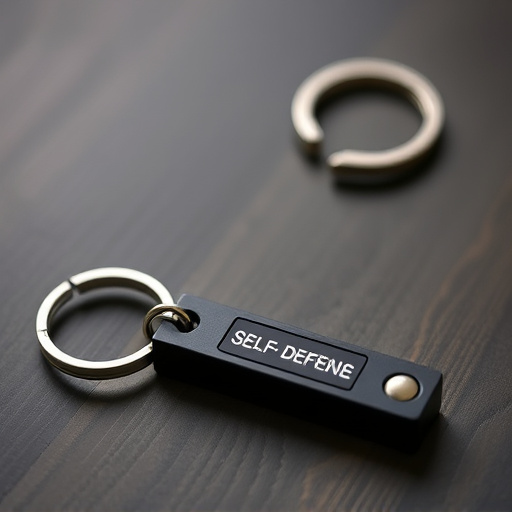Understanding local laws regarding personal defense tools is crucial before considering a keychain safety device, with specific regulations around "less-lethal" or "non-lethal" weapons like keychains. The best keychain weapon striking points should focus on temporary incapacitation without causing permanent harm, using sharp yet balanced materials and ergonomic designs for firm grip. Prioritize safety features like non-slip textures or locking mechanisms. Choose a device with robust, strategically placed striking points, check functionality through simulations, and stay informed about local laws to avoid legal issues. Market popularity highlights the need for effective yet legally compliant keychain self-defense devices, focusing on vulnerable areas while adhering to regional regulations.
In today’s world, personal safety is paramount. Keychain self-defense devices have emerged as convenient and compact options for individuals seeking protection. However, navigating the legal requirements surrounding these devices can be challenging. This article guides you through the essential aspects of keychain safety device legalities, focusing on striking points efficiency, design considerations, and market insights into the best legal options. Stay informed to make an informed choice when it comes to your safety.
- Understanding Legal Framework for Keychain Devices
- Keychain Weapon Design Considerations for Safety
- Compliance Checks for Striking Points Efficiency
- Market Insights: Best Legal Options for Keychain Self-Defense
Understanding Legal Framework for Keychain Devices
Before considering a keychain safety device, understanding the legal framework that governs such tools is paramount. Each jurisdiction has its own set of regulations surrounding personal defense devices, including keychains designed for self-protection. In many countries, laws categorize these devices based on their potential as weapons and the circumstances under which they can be carried or used.
For instance, some keychains with built-in striking points may fall under the category of “less-lethal” or “non-lethal” weapons, subject to specific legal restrictions. Regulations might dictate who can possess such devices, where they can be carried, and in what situations they can be deployed legally. Knowing the best keychain weapon striking points is only half the battle; understanding local laws ensures you remain on the right side of the law while prioritizing your safety.
Keychain Weapon Design Considerations for Safety
When designing a keychain weapon, prioritizing safety is paramount. Consider the potential impact and range of forces that could be exerted during use. The best keychain weapon should have a striking point designed to incapacitate temporarily without causing permanent harm. This involves selecting materials and edges that are sharp yet balanced, minimizing the risk of cuts or lacerations.
Additionally, look into ergonomic designs that ensure a firm grip, reducing the likelihood of slipping during emergency situations. Incorporating features like non-slip textures or locking mechanisms can enhance control and safety. Remember, the goal is to provide self-defense capabilities while adhering to legal requirements and promoting responsible use. Focus on striking points tailored for effective yet controlled force application, making your keychain weapon a practical and safe tool.
Compliance Checks for Striking Points Efficiency
When considering a keychain safety device, one crucial aspect to evaluate is its striking points efficiency. The best keychain weapon designs incorporate robust and strategically placed striking points that can help ensure effective self-defense in various situations. Regular compliance checks are essential to verify that these striking points remain reliable and adhere to legal requirements, which vary across different jurisdictions.
These checks should encompass thorough testing of the device’s functionality, including simulations of real-life defensive scenarios. By doing so, users can be confident that their keychain weapon will perform as intended when needed most. Additionally, staying informed about local laws and regulations regarding self-defense tools is paramount to avoid legal repercussions. Regular compliance checks and updates ensure that your keychain safety device not only meets the necessary striking points efficiency standards but also remains within legal boundaries.
Market Insights: Best Legal Options for Keychain Self-Defense
The market for keychain self-defense devices has seen a surge in popularity, with consumers seeking portable and discreet ways to protect themselves. This trend has led to an array of innovative products entering the space, offering various features and legal options for personal safety. When considering the best keychain weapon striking points, several key factors come into play, ensuring both effectiveness and compliance with legal requirements.
In terms of legal considerations, it’s crucial to understand that the legality of self-defense devices varies across regions. Some countries have specific regulations regarding the carrying of tactical tools, including keychains designed for protection. The best approach is to research and adhere to local laws and guidelines. Keychain weapons often focus on vulnerable areas like eyes, throat, or groin, which are considered effective striking points. However, prioritizing legal compliance ensures that individuals can defend themselves without facing legal repercussions, making it a vital aspect when exploring the best keychain self-defense options.
When considering a keychain safety device, understanding the legal framework and prioritizing user safety is paramount. By adhering to the discussed design considerations and compliance checks, such as evaluating striking point efficiency, you can ensure that your chosen device meets not only the legal requirements but also offers effective self-defense capabilities. With the right knowledge, users can navigate the market with confidence, selecting a keychain weapon among the best available options for personal protection while adhering to relevant laws.
